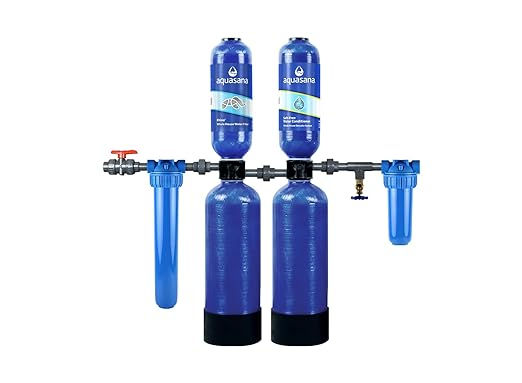Challenges and Benefits of Choosing Natural and Durable Materials
- nhgresolutions
- Sep 16, 2024
- 4 min read
Adopting more conscious practices at home goes beyond simply reducing consumption. In sustainable minimalism, the choice of materials plays a key role in ensuring that the products we bring into our spaces are durable, eco-friendly, and non-toxic. While this choice offers numerous benefits, it also presents challenges that need to be considered.
The Challenge of Choosing Natural and Durable Materials
Higher Initial Cost
One of the main challenges when opting for natural and durable materials is the initial cost. Products made from certified wood, stainless steel, or glass can be more expensive compared to cheaper, lower-quality alternatives. However, this cost should be seen as a long-term investment. Durable materials tend to last much longer, requiring fewer replacements, which results in savings over time.
Accessibility and Availability
It’s not always easy to find sustainable, high-quality products. Often, they aren’t available in all stores, leading consumers to opt for less eco-friendly alternatives out of convenience. Fortunately, as environmental awareness increases, more brands are adapting and expanding sustainable options on the market.
Habit Change
Transitioning to durable materials also requires a habit change. We’re used to the convenience of disposable, low-cost products, and adapting to the use of items like metal utensils or glass jars can feel unfamiliar at first. This change requires patience and commitment, but the benefits are significant.
Benefits of Choosing Sustainable and Durable Materials
Less Waste, More Sustainability
By choosing long-lasting products made from natural materials like certified wood, glass, or bamboo, you directly contribute to reducing waste. These materials are recyclable, biodegradable, or reusable, meaning less trash is generated and less plastic ends up in landfills or oceans.
Health and Well-being
Many cheap products, especially plastics, contain toxic chemicals that can transfer to food and harm your health. Glass, stainless steel, or bamboo utensils do not release harmful substances, making your home a safer environment for everyone. Moreover, opting for furniture free of volatile organic compounds (VOCs), such as toxic varnishes, improves the air quality in your home.
Durability and Savings
While products made from durable materials may have a higher upfront cost, they tend to last much longer. High-quality wooden furniture, for example, can last decades if well cared for, unlike plastic or MDF furniture that wears out quickly. This means fewer replacements and, ultimately, more savings.
Aesthetics and Value
Natural materials bring a unique beauty to the environment. Solid wood furniture, for example, has a timeless finish that adds aesthetic value and durability to a space. These products are also more valuable over time, creating a space that not only looks better but remains functional and beautiful for years.
Practical Examples
Furniture: Opt for furniture made from certified or recycled wood. This not only ensures durability but also helps preserve forests and ecosystems. Additionally, wooden furniture emits fewer toxic compounds, unlike MDF or plywood furniture.
Kitchen Utensils: Replace plastic containers with glass or stainless steel containers. These materials are safer for food storage and can be reused for many years. It's also important to switch disposable cutlery for bamboo or reusable metal alternatives, which are durable and healthier for the environment.
A Small Challenge for a Big Benefit
Choosing natural and durable materials may present an initial challenge in terms of cost and habit change, but the benefits are clear and long-lasting. By making this transition, you’ll be investing in products that bring more health, safety, and sustainability to your home. More than a trend, it’s a conscious choice that transforms the domestic environment into a space that respects the planet and promotes well-being.
Every small change counts, and gradually, this journey becomes not only possible but also extremely rewarding. By integrating sustainable minimalism into your routine, you’ll be contributing to a healthier and more balanced world while enjoying a more functional and beautiful home.
5 Practical Examples
Certified Wood Furniture
Practical Example: When choosing furniture for your home, opt for pieces made from FSC-certified or recycled wood. These materials ensure the product comes from sustainable forestry practices without environmental devastation. For instance, tables, chairs, and shelves made from solid wood are more durable, can be restored, and add a timeless touch to your home, while avoiding plastic or low-quality wood furniture.
Glass Storage Jars
Practical Example: Replacing plastic containers with glass jars is a choice that increases durability and food safety. Glass is toxin-free, doesn’t absorb odors or stains, and is perfect for storing food and leftovers. Glass jars can also be taken to the store for bulk shopping, reducing the use of disposable plastic packaging. They’re easy to clean, reusable for years, and recyclable at the end of their life cycle.
Bamboo or Reusable Metal Cutlery
Practical Example: Instead of using disposable plastic cutlery for quick snacks or meals, choose bamboo or reusable metal cutlery. Bamboo cutlery is lightweight, biodegradable, and durable, making it perfect for carrying in your bag or using at work. Metal cutlery is a long-term option that can be washed and reused countless times. Both alternatives are healthier for the environment and for your daily use.
Natural Home Textiles
Practical Example: Choosing natural textiles, such as organic cotton or linen, for items like curtains, tablecloths, rugs, and bedding, is a way to avoid synthetic fibers that release microplastics during washing. Products made from natural materials are more durable, breathable, and, in many cases, biodegradable. They add a cozy and stylish feel to your space while minimizing environmental impact.
Efficient and Multifunctional Appliances
Practical Example: Investing in multifunctional and energy-efficient appliances can significantly reduce resource consumption. For example, a quality food processor can replace several kitchen utensils, reducing the number of gadgets you need and saving space. Additionally, by choosing models with high energy efficiency, you consume less electricity, which benefits both the environment and your utility bills.




留言